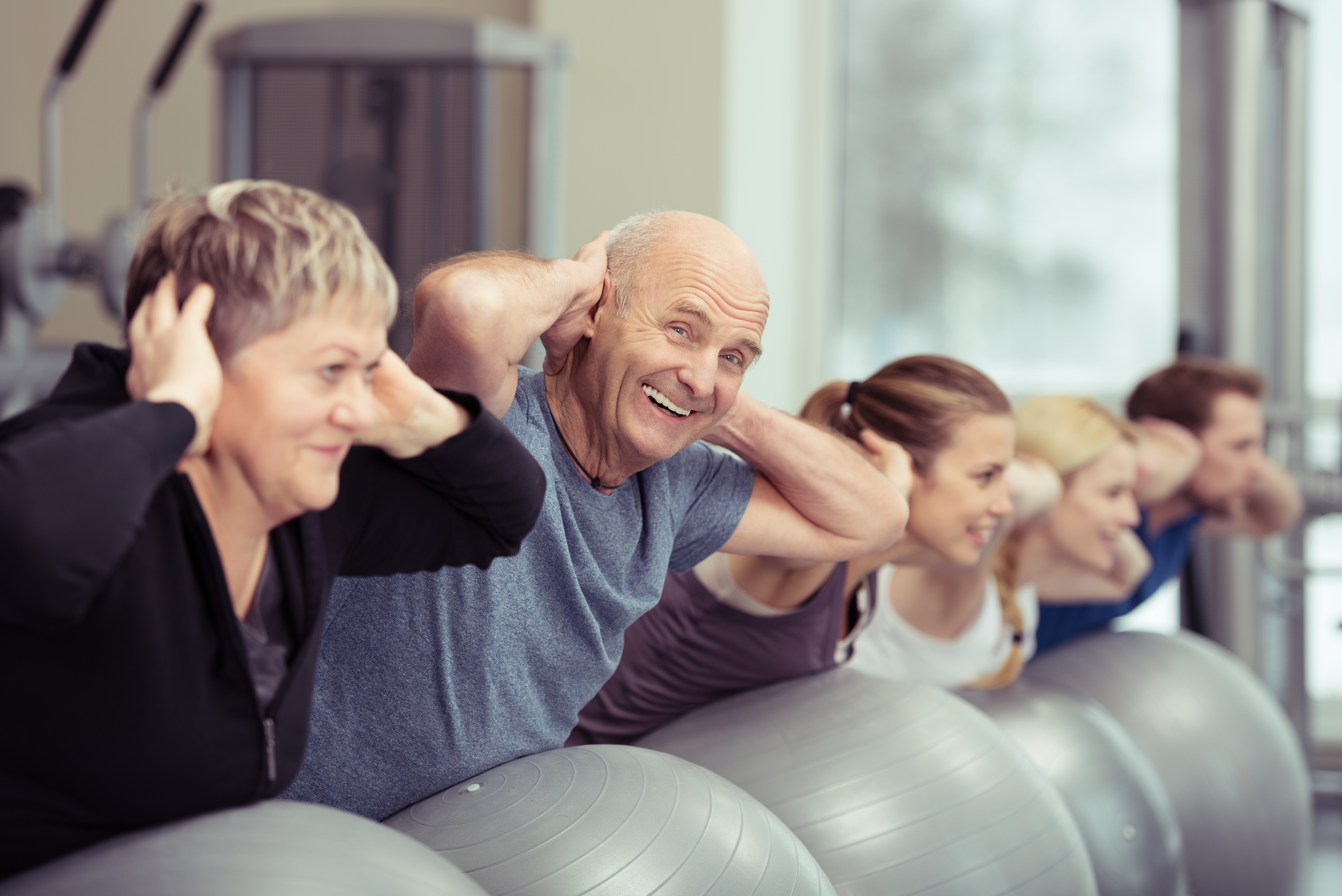Staying active

The more active you are and the less time you spend sitting down for extended periods of time, the more you can offset the effects of ageing.
There are six simple exercises you can do two or three times a week (or every day, if you’d prefer), to help improve your balance and co-ordination, which can reduce your chance of having a fall.
Please only attempt these exercises if you feel safe to do so and make sure what you're holding onto, is nice and steady.
1) Heel raises
Stand up tall and hold on to the back of something sturdy with both hands, such as a chair or the kitchen sink. Lift your heels off the floor and take your weight on your big toes. Hold the position for 3 seconds, then lower back down to the floor with control. Repeat the move 10 times.
2) Toe raises
Stand up tall and continue holding your support with both hands. Raise your toes off the floor and take your weight on your heels (try not to stick your bottom out!). Hold for 3 seconds, then lower back down to the floor with control. Repeat the move 10 times.
3) Sit to stand
Sit tall towards the front of your chair, with your feet slightly back (so they’re not directly under your knees). Lean forward slightly and stand up, using your hands on the chair if you need to. Step back carefully until your legs touch the chair, then slowly lower yourself back into a seated position. Repeat the move 10 times.
4) Heel toe stand
Stand up tall and hold on to the back of your sturdy chair or kitchen sink again, but this time with only one hand. Put one foot directly in front of the other, so they’re in a straight line, with a small gap between your feet. Looking ahead, take your hand off the support and balance for 10 seconds. Move your front foot back and place it hip width apart from your other foot. Repeat the move for another 10 seconds, this time with the other foot in front.
5) Heel toe walking
Stand up tall again, this time with one hand placed on your kitchen counter. Look ahead and then walk 10 steps forward, placing one foot directly in front of the other, so they form a straight line. Try to maintain a steady walking action, if you can. Place your feet hip width apart, before turning around and repeating the steps back in the opposite direction.
6) One leg stand
Stand close to your support and hold on to it with one hand. Slightly lift one foot off the floor, so you’re now balanced on one leg. Make sure you keep your standing knee soft and your posture upright. Hold the position for 10 seconds, before lowering your foot and repeating on the other leg.
Chartered Society of Physiotherapy stay active at home film
Top tips!
- Make sure the chair or support you’re using is sturdy.
- Always wear appropriate and supportive footwear.
- If you experience any chest pain, dizziness or severe shortness of breath, immediately stop and call NHS 111 or your GP practice.
- If you feel slightly sore the day after exercising, don’t worry it’s quite normal.
There are a great range of other exercises you can try, including those available on the NHS website, which help with your strength and balance or the ones shown in the below RoSPCA stay steady film.
Find local exercise groups
RoSPCA stay steady film
